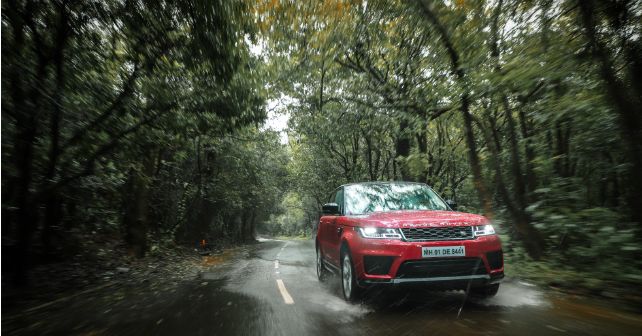
Is a 2.0-litre petrol motor punchy enough to sufficiently propel the 2-tonne weight of this Range Rover Sport down the road?
Over the last few years, Jaguar Land Rover seems to have shifted its focus towards petrol powered machines. Since the global unveiling of the Ingenium petrol motor in September 2016, the company has introduced petrol variants of the XE, XF, F-Pace, Discovery Sport, etc. The latest car to get the 2.0-litre Ingenium motor is the Range Rover Sport, which comes in the same state of tune as the F-Type 2.0. However, it’s considerably heavier. So, the question is this – can this motor really work in a luxury SUV, or has JLR gone a step too far with downsizing? Let’s find out.
Small, but meaty
Jaguar Land Rover has always offered a plethora of engine options for the Range Rover Sport. While the 5.0-litre V8 supercharged petrol sits at the top in the SVR, until recently, the 3.0-litre V6 diesel was the base trim. Somewhere in the middle sit the 3.0-litre V6 petrol and the 4.4-litre twin-turbo V8 diesel. The addition of a 2.0-litre Ingenium petrol motor makes this the most affordable Range Rover Sport on sale today. But don’t just shrug because this is the base variant, because there’s more here than meets the eye.
On paper, the engine specifications of this Range Rover Sport may not inspire a lot of confidence. But get behind the wheel, and all your reservations are immediately dismissed. The motor makes its peak torque of 400Nm from 1,500rpm, and the manner in which it pulls from there on really takes you by surprise. The torque spread is wide and goes all the way till 4,000rpm, and the motor feels meaty all the way to 6,000rpm. In terms of outright performance, it won’t knock your socks off, but it’ll certainly keep you interested.
Consider this — JLR claims that this 2.0-litre petrol turbo takes the Range Rover Sport from a standstill to 100km/h in just 7.3 seconds, which is just a tenth of a second slower than the more powerful 335bhp 4.4-litre V8 diesel. That said, you do sometimes feel the need to go hard on the right pedal – especially when you need urgent power. But this has more to do with the slight reluctance of the 8-speed automatic transmission while downshifting, rather than the outright grunt of the motor itself.
In terms of refinement, the Range Rover Sport gives you no reason to complain. The engine is quiet, and the cabin remains very well insulated.
The firm suspension setup and well-weighted steering ensure that the Range Rover Sport feels confident around bends. The all-wheel-drive system provides good grip, further adding to the overall drive experience. The sheer size and bulk of this SUV don’t go unnoticed, but, on the whole, it’s quite impressive.
From the inside
Inside, the Range Rover Sport has a very well-appointed cabin. Although the RR Sport P300 sits at the bottom of the variant list, it still has InControl Touch Pro Duo – two touchscreens in the centre console, one for the infotainment system and the other for the climate control and driving modes. While the display is crisp, the response to touch isn’t as sensitive and accurate as some of the other cars in this price range.
Although the car has traditional knobs to regulate the temperature, you can only adjust the fan speed using the touchscreen, which requires you to take your eyes off the road. There is also a third screen for the instrument cluster, which is extremely informative – and I just love the way that you can customise the display as per your preference. You can opt for a single or a two-dial setup, navigation, or even media information. These customisations can be done using the touchpad on the steering wheel. Frankly, I would have preferred traditional buttons, but there’s no denying that these features make the car look and feel chic.
Verdict
The prices of the 2.0-litre petrol-powered Range Rover Sport start at `86.71 lakh, while the mid-spec SE trim carries a sticker price of `94.49 lakh. And while that may sound like a lot, the Range Rover Sport 2.0 gets enough equipment to justify the price tag. And it more than justifies its price when you consider that it’s just as fast as the far bigger – and pricier – 4.4-litre V8 diesel.
Also Read:
- Range Rover Sport Petrol
Engine: 1,997cc / 4 Cylinders / 16-Valves / Turbocharged
Fuel: Petrol
Power: 296bhp @ 5,500rpm
Torque: 400Nm @ 1,500-4,000rpm
Transmission: 8-Speed Automatic / All-Wheel Drive
Acceleration: 0-100km/h – 7.3 seconds
Price: ₹94.49 lakh (Ex-showroom)
X-Factor: A four-cylinder motor that’s as punchy as a V8 – enough said!
| Pros | Cons |



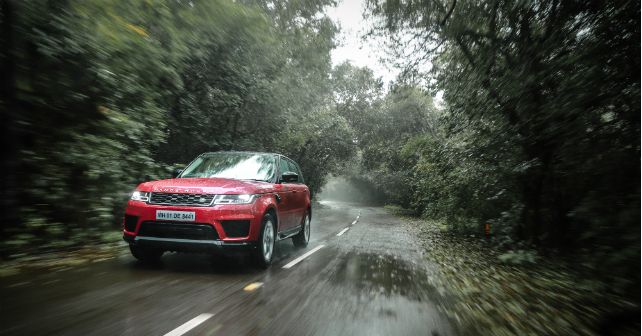
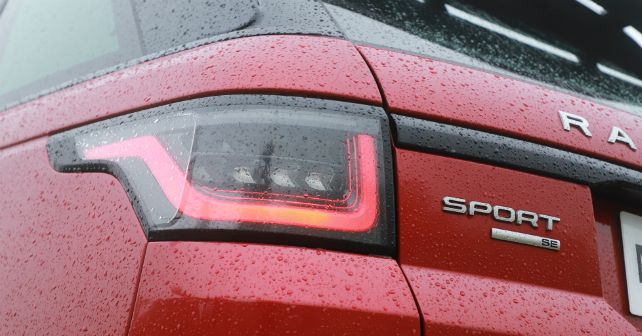
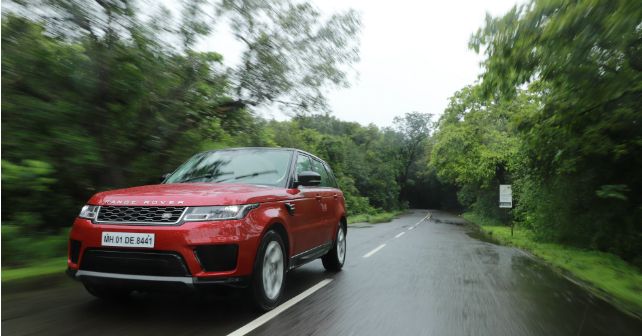

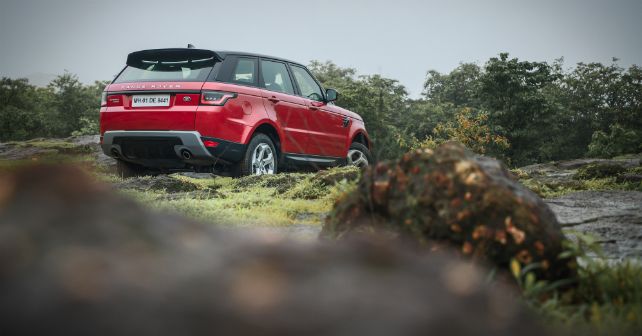




















Write your Comment